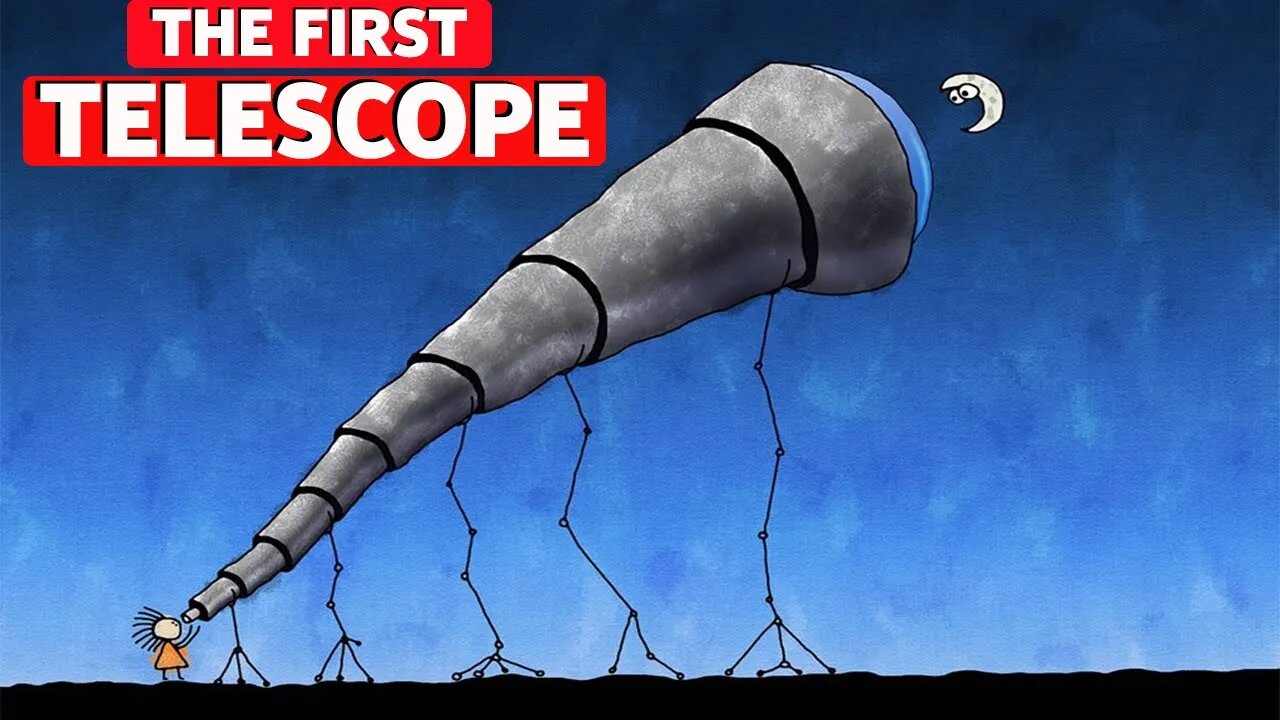Premium Only Content

TELESCOPE HISTORY: FROM GALILEO TO HUBBLE -HD
TELESCOPE HISTORY: FROM GALILEO TO HUBBLE
The history of telescopes spans several centuries and represents a remarkable journey of human curiosity, innovation, and technological advancement. From Galileo Galilei's pioneering observations to the groundbreaking discoveries made by the Hubble Space Telescope, the evolution of telescopes has revolutionized our understanding of the cosmos. Here is a description of this transformative journey:
Galileo's Telescope (17th century): Galileo Galilei is credited with inventing one of the earliest telescopes in the early 17th century. His telescope featured a simple arrangement of lenses that allowed him to observe celestial objects in greater detail. Galileo's observations of the Moon, Jupiter's moons, and the phases of Venus provided evidence supporting the heliocentric model of the solar system.
Refracting Telescopes (17th-19th centuries): Building upon Galileo's design, astronomers refined and improved telescopes by utilizing lenses to gather and focus light. Refracting telescopes, such as the ones developed by Isaac Newton and Christiaan Huygens, expanded our understanding of the planets, stars, and galaxies, revealing the intricate beauty and vastness of the universe.
Reflecting Telescopes (18th-19th centuries): The introduction of reflecting telescopes, which utilized mirrors instead of lenses to gather and reflect light, marked a significant advancement. William Herschel, a notable astronomer, constructed larger and more powerful reflecting telescopes, allowing for detailed observations of celestial objects beyond what was possible with refracting telescopes.
Mount Wilson Observatory (early 20th century): The Mount Wilson Observatory, established in California, played a pivotal role in advancing astronomical research. Astronomers such as Edwin Hubble utilized the observatory's 100-inch Hooker telescope to make groundbreaking discoveries, including evidence of an expanding universe and the existence of other galaxies beyond our Milky Way.
Space-Based Telescopes (20th century): The launch of space-based telescopes opened up new frontiers in observational astronomy. The Hubble Space Telescope, launched in 1990, revolutionized our understanding of the cosmos. Orbiting above Earth's atmosphere, it provided exceptionally clear and detailed images, enabling profound discoveries about the age of the universe, dark matter, and black holes.
Advancements in Technology (21st century): In recent years, telescopes have continued to evolve with advancements in technology. From ground-based telescopes with adaptive optics correcting for atmospheric distortion to space-based observatories like the Kepler and James Webb Space Telescopes, astronomers have access to increasingly powerful tools to explore the universe.
The history of telescopes demonstrates the relentless pursuit of knowledge and the human desire to explore the unknown. Each milestone in telescope technology has expanded our understanding of the cosmos, allowing us to glimpse the wonders of distant galaxies, unravel the mysteries of the universe's origins, and inspire awe and curiosity for generations to come.
#TelescopeRevolution
#ExploringCosmicWonders
#GazeBeyondHorizons
#GalileosLegacy
#FromLensToMirror
#EyesOnTheStars
#UnveilingTheUniverse
#SpaceTelescopeAdvancements
#JourneyThroughCosmos
#HubbleRevelations
#GroundbreakingObservations
#InnovationInAstronomy
#ThroughTheTelescopeLens
#CosmicExplorationTimeline
#TelescopeEvolution
#AstronomicalRevolution
#UnlockingCelestialMysteries
#CosmicGlimpses
#ViralTelescopeHistory
#WitnessingCosmicWonders
-
 3:12:50
3:12:50
EricJohnPizzaArtist
4 days agoAwesome Sauce PIZZA ART LIVE Ep. #52: GEYCK!
9.96K3 -
 57:30
57:30
RiftTV/Slightly Offensive
4 hours agoTHIS is Where It ALL Went Wrong.. The Rise of NEOCONS | Rift Book Club | B1E2
13.7K18 -
 5:13:57
5:13:57
Barry Cunningham
7 hours agoBREAKING NEWS: SENATE FINAL DEBATE AND DISCUSSION ON BIG BEAUTIFUL BILL
138K82 -
![🔴LIVE | [NIGHTMARE] Assassin's Creed Shadows | PT 5](https://1a-1791.com/video/fww1/30/s8/1/J/V/P/W/JVPWy.0kob-small-LIVE-EXPERT-Assassins-Creed.jpg) LIVE
LIVE
Tekavor
3 hours ago🔴LIVE | [NIGHTMARE] Assassin's Creed Shadows | PT 5
344 watching -
 48:10
48:10
Aztekin59
2 hours ago🔵🔴best weapon?🔴🔵
2.5K1 -
 1:17:14
1:17:14
Sarah Westall
9 hours agoPolitical Rhetoric, War and Open Borders Breeding Dangerous Extremist Cells w/ Carole Lieberman
93.8K37 -
 1:12:18
1:12:18
Josh Pate's College Football Show
6 hours ago $0.32 earnedCFB’s Team To Beat | Recruiting May Be Back | Better OR Worse In 2025 | Truth About Brent Venables
10.7K -
 43:38
43:38
Patriots With Grit
1 day agoPoverty to Prosecutor; The Food Stamp Warrior | John Deaton
8.51K1 -
 4:17:49
4:17:49
Amish Zaku
8 hours agoParty Animal Sesh hosted by Cewpins
20.5K1 -
 7:54:24
7:54:24
AoAGeneral
9 hours agoDarktide: New Class Arbites 1 To 23
16.3K